Annual Report
School of Chemical and Biomolecular Engineering Think
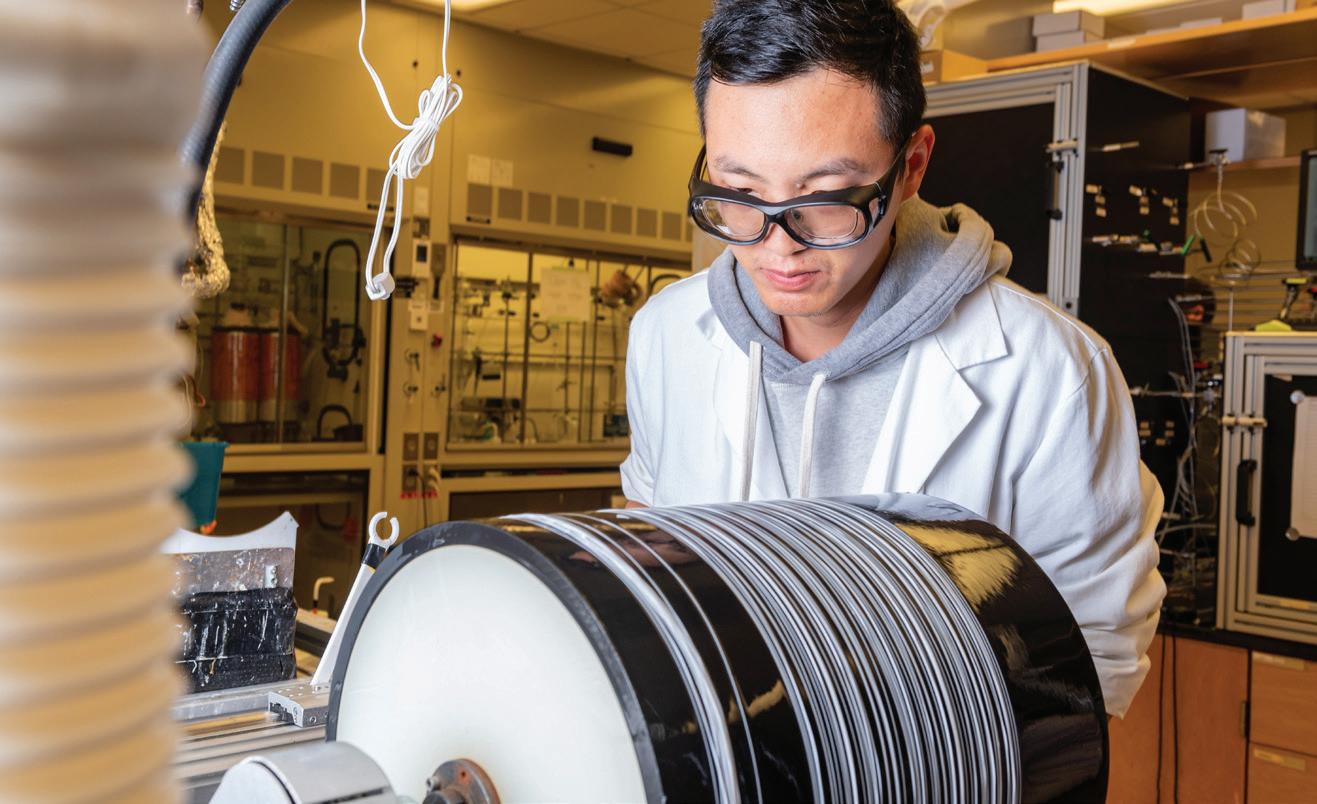


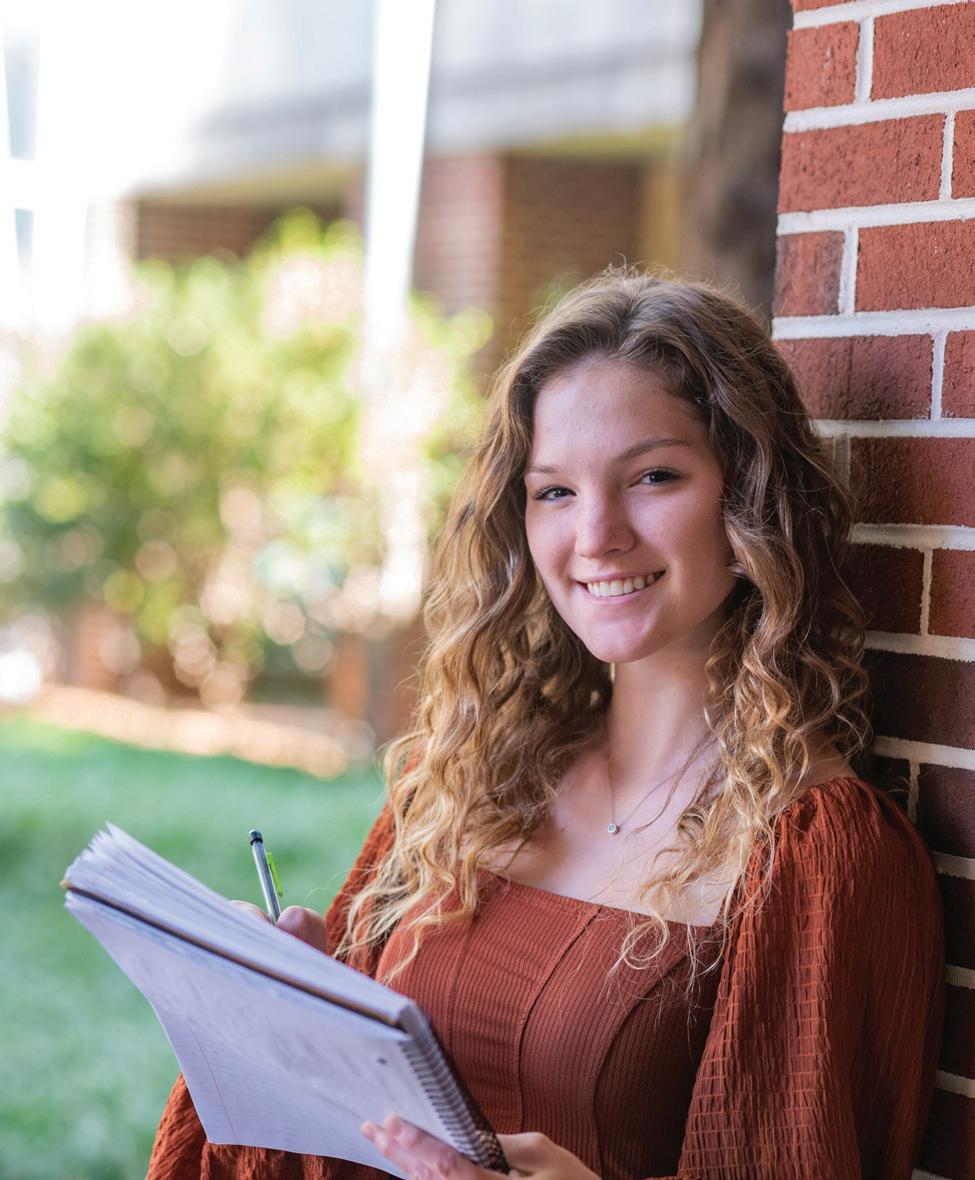
ChBE
Big. Solve Big.
Giving Opportunities
To inquire about making a gift in support of ChBE, contact: Lauren M. Kennedy (Individuals & Foundations) lauren.kennedy@mse.gatech.edu
Donna Peyton (Corporate Engagement) donna.peyton@chbe.gatech.edu
A Message from
Christopher W. Jones, John F. Brock III School Chair

One year after assuming the role of School Chair, I find myself more excited about our amazing ChBE program than ever before. I have had the opportunity to meet dozens of alumni who are contributing to the betterment of humanity in myriad ways.
I have watched our students emerge from the cloud of the pandemic and aspire to go forth after graduation and make their marks on the world. And I have watched our faculty and staff come back to campus and recreate the all-important GT ecosystem that allows our students to thrive.
In 2022, we were fortunate to have three new assistant professors – Tom Gartner, Vida Jamali, and Alex Abramson – start their research and teaching programs.
You can read more about them in this newsletter.
We also attracted one of the nation’s top catalysis researchers, Professor David Flaherty, to join our faculty next year. We deployed critical philanthropic gifts in support of our creative faculty, thanks to the foresight and generosity of our alumni and friends. Our innovative online Graduate Certificate in Data Science for the Chemical Industry, first launched in 2020, continues to thrive and attract both professional and residential students.
I hope you will enjoy reading this brief overview of some of the noteworthy events and milestones achieved in 2022. Best wishes for a fruitful 2023!
Established in 1901, the School of Chemical and Biomolecular Engineering (ChBE) is one of eight schools in the College of Engineering at the Georgia Institute of Technology.
Ranked among the top 5 engineering programs in the nation for both its graduate and undergraduate programs by U.S. News & World Report, the School is one of the oldest and most diverse programs in the country.
CONTACTS:
Main Office: (404) 894-1838 Chair’s Office: (404) 894-2867
Undergraduate Program: (404) 894-2865 ugrad.info@chbe.gatech.edu
Graduate Program: (404) 894-2877 grad.info@chbe.gatech.edu
Magazine Editor: Brad Dixon Send news to news@chbe.gatech.edu

Contents
1 2 3 4 7 10 12
and
the
Frontier
Center
Million
Partnership Research Features
News
Features
News
About ChBE
Strength
Breadth: ChBE by
Numbers Energy
Research
$26
NSF
Faculty
& Honors Alumni
Student
Think Big. Solve Big.

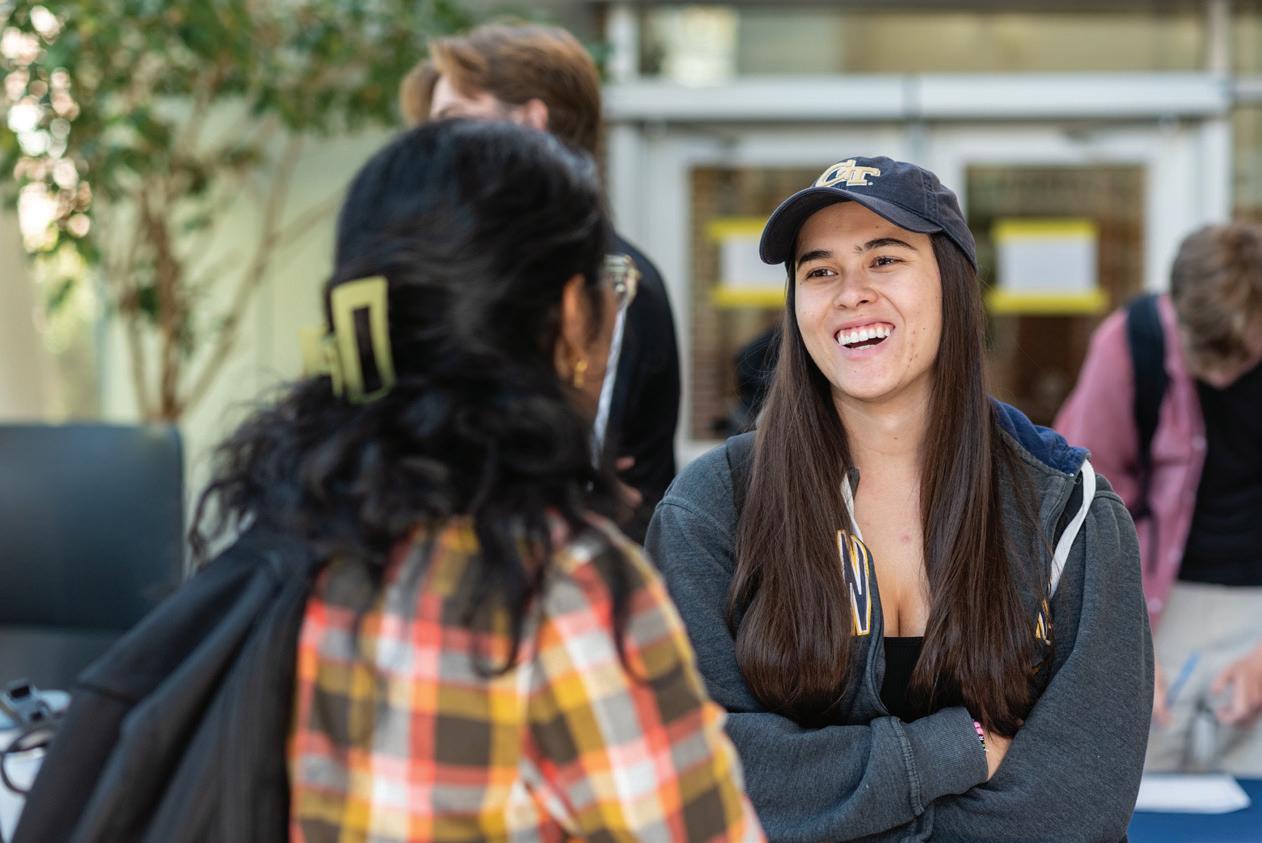

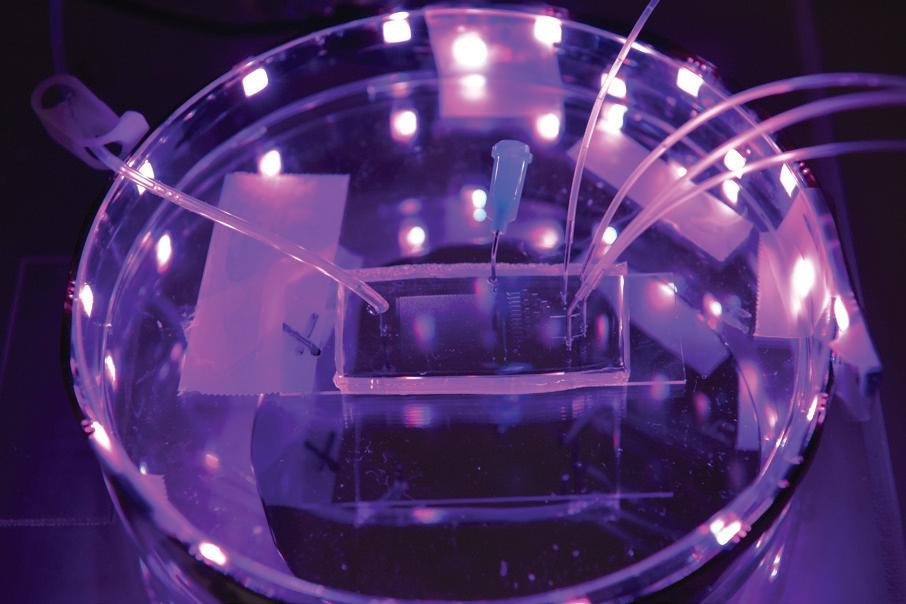
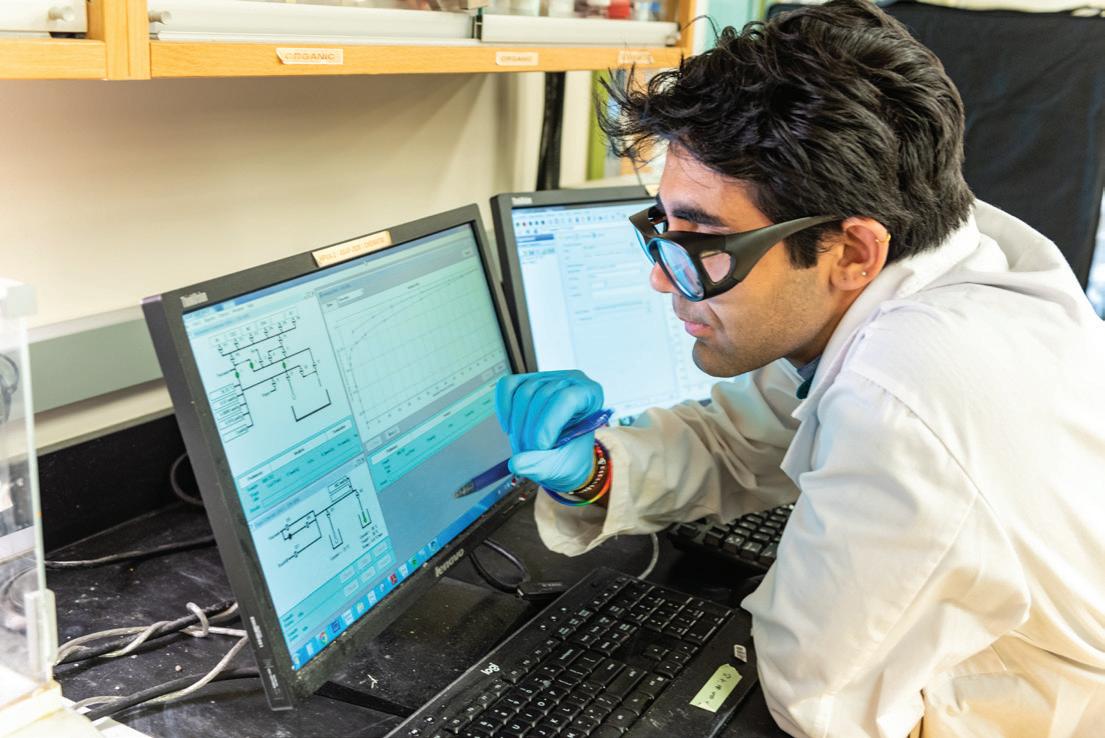
Saad Bhamla AIChE Fellows serving on the faculty 12 : 17 ChBE faculty members hold major editorial positions with top technical journals Faculty members elected to the National Academy of Engineering 9 Award winners on the faculty More than 60% of ChBE undergrads participate in research. #2 Best Undergraduate Chemical Engineering Program in the Nation #5 Best Graduate Chemical Engineering Program in the Nation America’s Best Undergraduate Engineering Colleges - U.S. News & World Report #4 Best Chemical Engineering Department in the World - Shanghai Ranking Consultancy Student Statistics 700+ undergraduates 244 graduate students - 213 PhD & 31 MS 44 faculty members (14 women) 5 affiliated faculty 4 academic professionals Faculty Statistics Lorem ipsum #4 Statistics Student Statistics
DOE Provides Third Round of Funding ($13.2 Million Grant) for Energy Frontier Research Center
Georgia Tech’s School of Chemical and Biomolecular Engineering has been renewed by the U.S. Department of Energy (DOE) for a third round of funding ($13.2 million over four years) for its Energy Frontier Research Center (EFRC) to study materials used in clean energy technologies.
This multi-institution EFRC, known as the Center for Understanding & Controlling Accelerated and Gradual Evolution of Materials for Energy (UNCAGE-ME), has advanced understanding of how acid gases interact with energy-related materials since its inception in 2014. The Center, with Georgia Tech as the lead participating institution, was first renewed for four years of funding in 2018.
“The selection for a third phase of funding is unusual, and speaks to the impact of the research already reported by the center in its first two phases,” said Christopher W. Jones, the John F. Brock III School Chair of ChBE.

“I believe this is attributable to the strong leadership provided by our current and former directors, Ryan Lively and Krista Walton. An additional constant throughout all three phases of the center has been strong collaboration between Georgia Tech, Oak Ridge National Laboratory, Lehigh University, and the University of Alabama.”
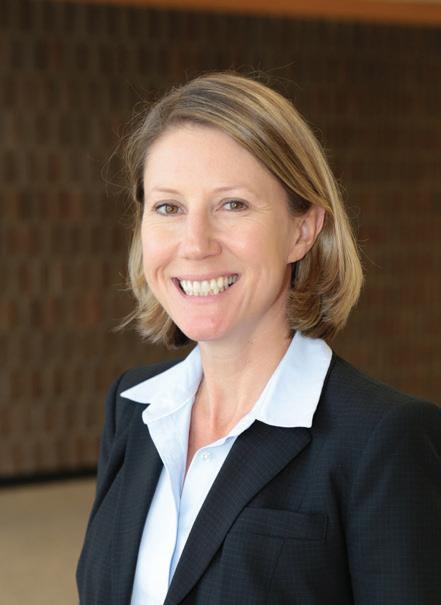
Clean Energy Technologies
In the next four-year phase, UNCAGE-ME will leverage capabilities developed over the last eight years to address basic science questions associated with the evolution of materials to be used in clean energy technologies, includ-
ing systems designed to capture and convert CO₂ from the air into useful chemicals.
UNCAGE-ME will employ an interdisciplinary, matrixed research structure that combines novel materials synthesis, in situ characterization techniques, molecular modeling, and data science approaches to achieve an unprecedented level of design, prediction, and control over (electro)catalysts, sorbents, and membranes.
“Two of the most basic commodity chemicals in the clean energy economy will be H₂ and CO₂. A special emphasis has been given to these two molecules with DOE’s Energy Earthshots that were announced in November 2021 –the Hydrogen Shot and the Carbon Negative Shot” said ChBE Professor Ryan Lively, the director of UNCAGE-ME.
“The selection for a third phase of funding is unusual, and speaks to the impact of the research already reported by the center in its first two phases” - Christopher W. Jones
“These are all-hands-on-deck calls for innovations in technologies and approaches that will reduce the cost of clean hydrogen by 80% to $1 per 1 kg in one decade as well as remove CO₂ from the atmosphere and durably store it at meaningful scales for less than $100/net metric ton of CO₂-equivalent,” said ChBE Professor Krista Walton, the inaugural director of UNCAGE-ME.
To help reach these goals,
From 2014 to 2022, the UNCAGE-ME’s research accomplishments (appearing in more than 200 publications) provided detailed descriptions of the impact of acid gas exposure on metal-oxides, metal-organic frameworks, carbons, supported amines, porous organic cages, and other materials.
This fundamental knowledge base directly supports the mission of the DOE’s Basic Energy Sciences program to provide the foundational science to guide the development of new energy technologies under realistic process environments.
“The College of Engineering is proud to continue leading this important initiative for an additional four years,” said Raheem Beyah, dean of the College of Engineering and Southern Company Chair. “This second renewal from DOE is a testament to Krista and Ryan’s leadership, as well as the vision and innovation of a science team comprised of Georgia Tech researchers and our collaborators around the nation.”
In addition to Georgia Tech, UNCAGE-ME partner institutions include Oak Ridge National Laboratory, the University of Alabama, University of Florida, University of California Riverside, Lehigh University, Sandia National Laboratory, and the University of Michigan.
2 SCHOOL OF CHEMICAL AND BIOMOLECULAR ENGINEERING, GEORGIA TECH
EFRC Director Ryan Lively and Founding Director Krista Walton
Georgia Tech’s $26 Million Partnership with National Science Foundation to Transform Fertilizer Production
Thanks to efforts to combat climate change, many have heard the catchphrase “closing the carbon loop” — a global effort to convert carbon dioxide into something useful to mitigate the damaging effects of pollution on the planet. Another environmental challenge relates not to carbon dioxide but nitrogen. Now, an ambitious plan to close the nitrogen loop is underway, and with it comes the potential to revolutionize agriculture in the U.S. and around the world.
The Georgia Institute of Technology will be part of CASFER, an NSF Engineering Research Center, with four other universities. Supported by an initial grant of $26 million from NSF, CASFER seeks to transform the U.S. from nitrogen cycle pollution to a nitrogen circular economy by developing new technologies and programs for capturing, recycling, and producing decarbonized nitrogen-based fertilizers (NBFs).
Georgia Tech is joined by Florida Agricultural and Mechanical University, Case Western Reserve University, the Massachusetts Institute of Technology, and Texas Tech University, which will lead the effort and serve as CASFER’s headquarters.
Closing the Nitrogen Loop
Nitrogen is used in many commercial applications, but one of the most significant uses is in NBFs for growing food. NBFs are put out into fields, but most do not get used — 80% are washed away and wasted, ending up as pollutants in the watershed. With support
from NSF, this team of universities will attempt to recover and reuse nitrogen compounds, the principal element in fertilizers.
opportunities and locations for collecting wasted fertilizer and determining how exactly the fertilizer affects individual environments.
“Our overall goal is to design processes that synthesize new or recover used fertilizers from waste at the same or lower price than traditional chemical manufacturing processes.” - Marta Hatzell
“By taking pollutants out of the water and converting them for use, we are taking a negative and making a positive out of it,” said Paul Kohl, Regents' Professor and Thomas L. Gossage Chair in the School of Chemical and Biomolecular Engineering (ChBE) and co-lead of the CASFER effort at Georgia Tech, along with Marta Hatzell, associate professor in the George W. Woodruff School of Mechanical Engineering and ChBE.

“This process will both decrease pollution and lower the cost of farming,” Kohl said.
Focus Areas
CASFER has three areas of focus it will pursue to achieve its goal. The first involves measuring and analyzing data to identify new
The second area — Kohl and Hatzell’s focus — is the actual collection and separation of nitrogen compounds from the three types of environments where they usually show up: produce farms, livestock farms, and wastewater treatment plants. They will develop specialized separation methods to pull nitrogen pollutants out of the various environments, creating new types of polymer membranes that work to separate and concentrate the compounds into solutions that can be converted for future use
The work will start in the laboratories at Georgia Tech, but later the team will build test beds — portable laboratories the size of small trailers — to test their separation methods on-site.
“All our separations technologies will be modular, electrified, and largely decarbonized,” said Hatzell. “Our overall goal is to design processes that synthesize new or recover used fertilizers from waste at the same or lower price than traditional chemical manufacturing processes.”
The third area is reconverting the concentrated solutions into usable fertilizer. Humans have been making fertilizer the same way for more than 100 years, using an expensive chemical process that requires natural gas — a resource in short supply. CASFER researchers will develop the conversion methods to create new fertilizers and strategies for dispensing it back into fields for growing crops.
CHBE.GATECH.EDU 3
Georgia Tech Co-leads Paul Kohl and Marta Hatzell
RESEARCH @ChBE
Researchers Develop Painless Tattoos That Can Be Self-Administered
Instead of sitting in a tattoo chair for hours enduring painful punctures, imagine getting tattooed by a skin patch containing microscopic needles. Researchers at the Georgia Institute of Technology have developed low-cost, painless, and bloodless tattoos that can be self-administered and have many applications, from medical alerts to tracking neutered animals to cosmetics.
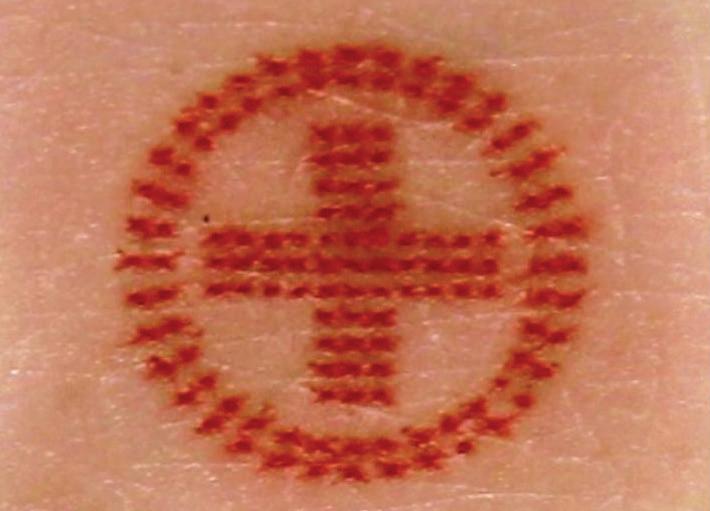
“We’ve miniaturized the needle so that it’s painless, but still effectively deposits tattoo ink in the skin,” said Professor Mark Prausnitz, principal investigator on the paper. “This could be a way not only to make medical tattoos more accessible, but also to create new opportunities for cosmetic tattoos because of the ease of administration.”
He presented the research in the
journal iScience, with former Georgia Tech postdoctoral fellow Song Li as co-author.
Tattoos are used in medicine to cover up scars, guide repeated cancer radiation treatments, or restore nipples after breast surgery. Tattoos also can be used instead of bracelets as medical alerts to communicate serious medical conditions such as diabetes, epilepsy, or allergies.
Various cosmetic products using microneedles are already on the market — mostly for antiaging — but developing microneedle technology for tattoos is new. Prausnitz, a veteran in this area, has studied microneedle patches for years to painlessly administer drugs and vaccines to the skin without the need for hypodermic needles.
“We saw this as an opportunity to leverage our work on microneedle
“We believe the injection could be done as an office procedure during routine exams that the patients are already getting.” - Mark Prausnitz
technology to make tattoos more accessible,” Prausnitz said. “While some people are willing to accept the pain and time required for a tattoo, we thought others might prefer a tattoo that is simply pressed onto the skin and does not hurt.”
Prausnitz’s lab has been researching microneedles for vaccine delivery for years and realized they could be equally applicable to tattoos. Prausnitz’s team started working on tattoos to identify spayed and neutered pets, but then realized the technology could be effective for people, too.
Zeolite Nanotube Discovery Made by Researchers at Georgia Tech
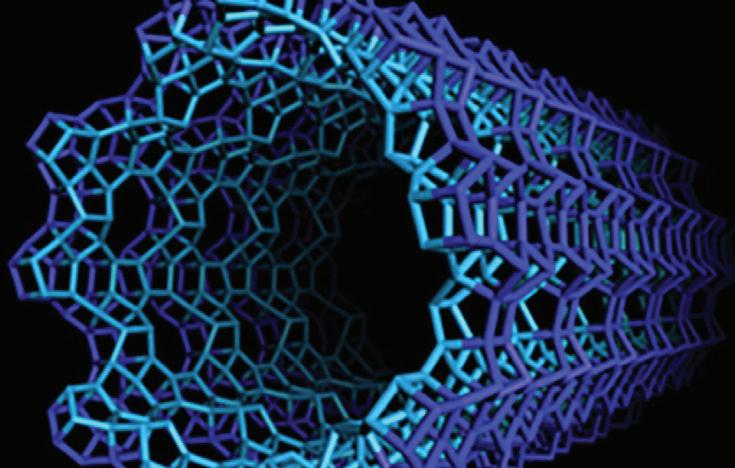
Zeolites, which are crystalline porous materials, are very widely used in the production of chemicals, fuels, materials, and other products. So far, zeolites have been made as 3D or 2D materials. This has changed with the recent discovery of crystalline zeolites in a nanotubular (1D) shape by researchers at Georgia Tech, Stockholm University, and Penn State University. The findings were published in Science.
“A discovery like this is one of the most exciting parts of our research,” said Professor Sankar Nair, principal investigator. “We’re increasingly used to doing research that has a pre-determined application at the end of it, so this is a
reminder that fundamental discoveries in materials science are also exciting and important.”
Zeolites have pores roughly the size of many types of molecules, and scientists and engineers have used the varied sizes, shapes, and connections of the pores to discriminate between molecules of different sizes,
allowing for the production of chemicals suitable for plastic production, or for the separation of undesired molecules from desired ones, as two examples.
The team was designing syntheses to assemble 2D zeolite materials. In an unexpected turn of events, some of the results indicated that a new type of assembly process was occurring. Indeed, one such case led to a novel 1D zeolite material that had a tube-like structure with perforated porous walls. This 1D material, termed a zeolitic nanotube, was unlike any zeolite ever synthesized or discovered in nature previously.
4 SCHOOL OF CHEMICAL AND BIOMOLECULAR ENGINEERING, GEORGIA TECH
Frenkel Biexcitons Light Up Organic Semiconductor Advances
Organic semiconductors already provide the energy behind optical technologies inside television displays, solar cells, and lighting fixtures. Their molecular carbonbased structure makes them cheaper to produce, more flexible, of lighter weight, and more environmentally friendly than silicon-based or composite semiconductors. The future in more applications is bright — if scientists can learn more about harnessing their ability to react to and produce light.
A team of Georgia Tech researchers, led by Professors Natalie Stingelin and Carlos Silva Acuña, brings us one step closer to understanding those properties. Their study, published in Science Advances, for the first time brings
tracking and measurement to organic semiconductor photoexcitations: particles put into “excited” or energized quantum states by light.
The semiconductors’ primary photoexcitations, called Frenkel excitons, dictate the optical qualities in those semiconductors. They can, in principle, form bonded pairs called biexcitons, but these have never
been identified unambiguously. Quantifying those reactions will help researchers learn more about their properties to unlock future uses, such as more efficient and sustainable batteries and solar cells, biosensors, and new types of lasers.
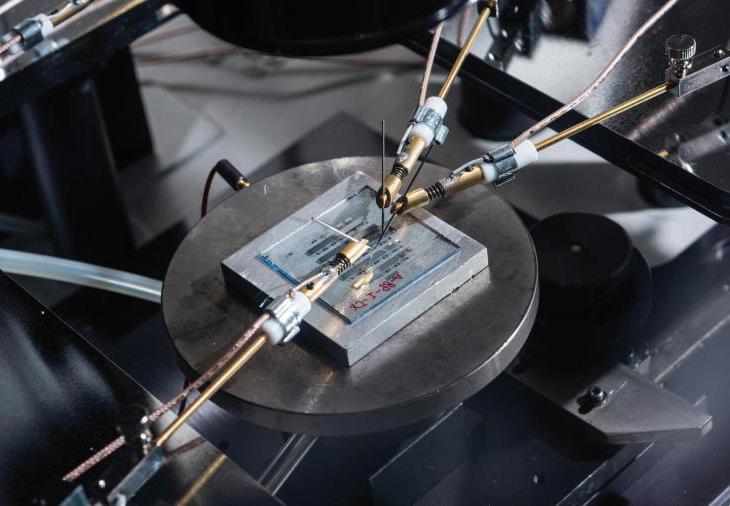
“It’s a window into the basic electronic structure and properties of these materials, but also into these tech applications we care about. How do we convert electrical energy to light? Or in photovoltaic applications, how do we convert solar light into electrical power? It’s more about understanding and discovering the very basic fundamental properties of materials that will allow the design of tailored materials that optimize a particular function.” - Carlos Silva Acuña
Whole-brain Functional Imaging Takes New Leaps with Deep Learning
Imaging neuro activities for long durations, high speeds, and large regions of the brain simultaneously is critical to understanding the underlying computations in the brain – in normal functions as well as in developmental and neurodegenerative diseases, according to Georgia Tech researchers.
Model organisms in neuroscience such as the round worm C. elegans enable these kinds of studies to be conducted. This is because researchers can record activities of their entire brains simultaneously with new microscopy techniques. However, collecting such data is difficult with commonly available setups due to several technical constraints.
But a new study published in Nature Communications shows that deep learning (a machinelearning technique) can overcome technical constraints in whole-
brain imaging, enabling new experiments that were previously not possible. Furthermore, this method will enable every lab in the world with common microscopy setups to do whole-brain imaging and accelerate discovery.
The study’s authors – Professor Hang Lu and Shivesh Chaudhary, PhD 2022 – are interested in uncovering the fundamental building blocks of intelligence. For this, they focus on the nervous system of C. elegans, small and compact with only 302 cells, but capable of generating complex behaviors.
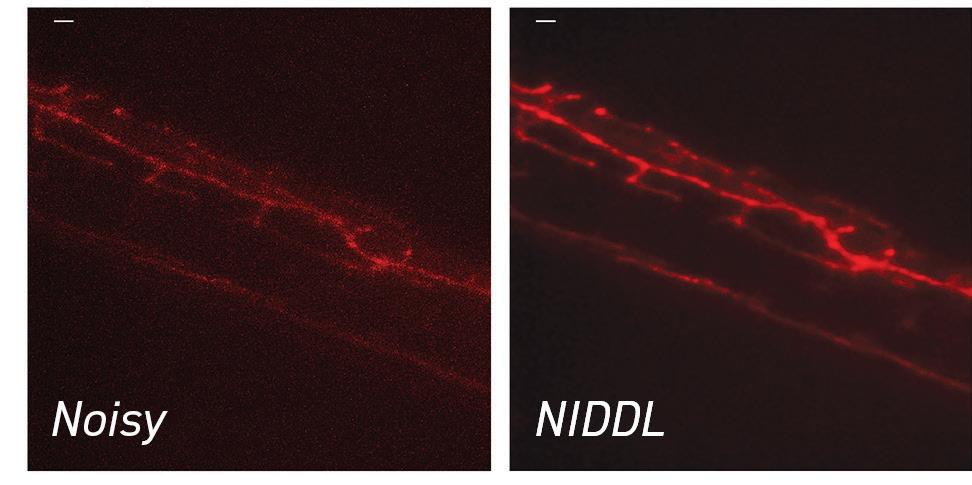
Whole brain optical imaging methods allows researchers to record neuron activities at single-cell resolution, providing unprecedented amounts of data. However, commonly available confocal microscopes are not able to handle the technical constraints required for whole brain imaging, the researchers said.
To solve technical challenges, the research team designed a new supervised deep learning method called Neuro-Imaging Denoising via Deep Learning (NIDDL).
The NIDDL framework demonstrates advantages compared to previous works. The method simplifies the training data collection strategy because the network can be trained with still images consistent with neuro activity captured on video.
CHBE.GATECH.EDU 5
Georgia Tech Researchers Study Methods for Assessing Classroom Air Quality during
COVID-19 Pandemic
As the Covid-19 pandemic has increased the importance of assessing indoor air quality and ventilation in public spaces such as universities, Georgia Tech researchers have identified that insitu measurements of either carbon dioxide (CO₂) or particulate matter (PM) by low-cost sensors can be used to perform such calculations in classrooms – an insight that could be useful for schools with limited resources or access to only one type of air quality monitor.
Measuring indoor pollutant levels provides initial insight into indoor air quality, but a more comprehensive metric to understand indoor air quality and pollutant exposure is the air change rate, or air changes per hour (ACH) – the number of times that the total air volume in a room or space is removed and replaced in an hour, explained Nga Lee “Sally” Ng, Love Family Professor in Georgia Tech’s School of Chemical and Biomolecular Engineering and School of Earth and Atmospheric Sciences.
Her research team monitored a large lecture hall at Georgia Tech over extended periods of time in Spring and Fall 2021, measuring the levels of CO₂ and aerosols, also known as PM, using low-cost sensors. Exposure to PM with a diameter smaller than 2.5 mm (PM2.5) has been associated with cardiopulmonary diseases and millions of deaths per year. Over the course of the pandemic, it has also become clear that aerosols can spread the Covid-19 virus through the air.
Varying Pollution Levels
CO₂ and PM levels can vary substantially in the classroom depending on the time of day. Student breathing during class times increases CO₂, while their movements can resuspend PM that had
“Our results provide new, data-driven insights into the practicality of using in-situ air quality monitoring to evaluate ventilation.” - Sally Ng
deposited to surfaces into the air. Periodic cleaning (fogging) of the classroom during 2021 also generated aerosols.
In a paper published in the journal Building and Environment, the researchers reported that measuring CO₂ levels alone over extended time periods should be sufficient to predict the decay rate of aerosols in a room. Both CO₂ and PM provide comparable estimates of air change rates.
Accessibility
CO₂ monitors are low cost and more accessible to institutions with limited resources than advanced techniques involving the release of chemicals into the air to measure air change rates, Ng said. PM monitors are also relatively inexpensive and could provide an even better picture of aerosol dynamics, she added.

“In reality, there are many situations in which someone wishing to use a PM or CO₂ sensor to evaluate the risk of a virus trans-
mission will only have access to a single sensor and limited other resources,” said PhD student Sabrina Westgate, the lead author of the paper. “The analysis provided in this work presents a case for the feasibility of using either a low-cost CO₂ or PM sensor to do just this.”
But the key is continuous measurement over a long period of time to characterize the air change rates, Westgate said. If the calculated air change rate of a room regularly falls below recommended values, it indicates that room ventilation or particle removal methods (such as installing portable air cleaners) should be improved, or that breaks between classroom use should be increased.
Professor Ng said, “To our knowledge, this is the first study that comprehensively evaluates and compares the decay rates of occupant-emitted CO₂ and particles of different sizes (PM1, PM2.5, and PM10) in a mechanically ventilated, university classroom using in-situ measurements. Our results provide new, data-driven insights into the practicality of using in-situ air quality monitoring to evaluate ventilation.”
The team employed a technique commonly used to quantity ventilation – analyzing the decay rate of tracer gases – to determine and compare occupancy-based CO₂ and PM decay rates.
This specific study focused on a single classroom, but it is part of a larger project by Ng’s team to continuously monitor air quality in more than 30 classrooms across the Georgia Tech campus since 2020. The team has worked with the company QuantAQ to install sensors, which are providing realtime air quality data that will help guide future measures to improve air quality.

6 SCHOOL OF CHEMICAL AND BIOMOLECULAR ENGINEERING, GEORGIA TECH
Regents’ Professor Mark Prausnitz Named Regents’ Entrepreneur
Mark Prausnitz is among five Georgia Tech professors named to the new distinction of Regents’ Entrepreneur by the University System of Georgia Board of Regents.
Prausnitz is a Regents’ Professor and the J. Erskine Love Jr. Chair of ChBE. His recent designation as a Regents’ Entrepreneur recognizes his reputation as a successful innovator who has taken his research into a commercial setting. He is the only Tech faculty member recognized as both a Regents’ Professor and Regents’ Entrepreneur.
ChBE
Welcomes
He has co-founded seven start-up companies based on the commercialization of microneedle technologies developed in his lab.
Three Assistant Professors
Together, these companies have raised nearly $350 million. Three of the companies have products for sale, including an FDAapproved treatment of ocular inflammation.
“Mark stands out nationally and internationally for the progress and impact he is making to bring exciting advances out of the laboratory and into medical practice to benefit the health and well-being of people around the world.” - ChBE School
Chair Christopher W. Jones
PhD, Chemical Engineering, University of Delaware, 2019
Previously a postdoctoral fellow at Princeton University, Gartner is developing and applying machine learning-enabled computational tools to uncover the chemical and physical driving forces underlying self-assembly in fluids and functional soft matter.


His research group designs functional soft materials for sustainability, alternative energy, and optoelectronic device applications.
He is ChBE’s Woody Faculty Fellow for 2022-23.
PhD, Chemical Engineering, Princeton University, 2013
Previously a postdoc at the University of California-Berkeley, Jamali is developing advanced computational approaches to understand and predict the properties of polymers and soft materials for energy, sustainability, and technology applications.

Her group uses machine learning-enabled computational tools to uncover the chemical and physical driving forces underlying thermodynamics, transport, and assembly in fluids and functional soft matter.
She was named a Rising Star in Soft and Biological Matter by the University of Chicago MRSEC.
PhD, Chemical Engineering Massachusetts Institute of Technology, 2019
Previously a postdoc at Stanford, Abramson develops ingestible, implantable, and wearable robotic therapeutic devices that solve key healthcare problems and provide measurable therapeutic outcomes.
His group’s translationally focused research spans a multitude of areas, including drug delivery devices for optimal drug adherence, soft materials for bioelectronic sensors and therapeutics, and preclinical drug screening technologies.
He was named a member of the Forbes 30 Under 30 Science List.

CHBE.GATECH.EDU 7
Thomas Gartner
Vida Jamali
Alex Abramson
Saad Bhamla was named among Industrial & Engineering Chemistry (I&EC) Research’s 2021 Class of Influential Researchers.
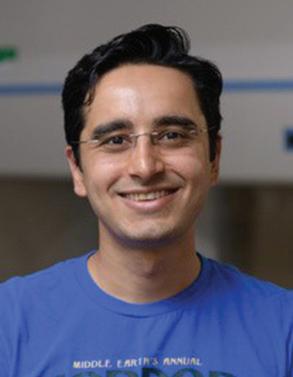
Andreas Bommarius won the 2022 AIChE PD2M Award for Outstanding Contribution to QbD for Drug Substance.
Christopher W. Jones and Nick Sahinidis were elected to the National Academy of Engineering, one of the highest professional distinctions awarded to an engineer.
Inducted in October 2022, they were among the year’s 133 new members. Georgia Tech now has 45 total NAE members.
John Blazeck won the New Innovator Award from the National Institutes of Health Common Fund’s High-Risk, High-Reward Research Program. He was also named by Popular Science as one of the “The Brilliant 10: The top up-and-coming minds in science.”

Fani Boukouvala was the first recipient of the Institution of Chemical Engineers’ Junior Sargent Medal, which honors an early-career individual who has made a significant recent contribution to research into computer-aided product and process engineering.
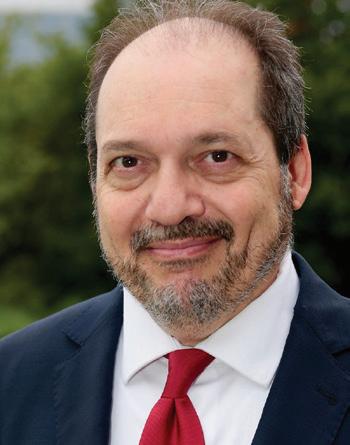
Victor Breedveld was elected as fellow of the American Institute of Chemical Engineers (AIChE), the highest grade of membership, which is achieved only through election by the AIChE Board of Directors.

Yuhang Hu is the 2022 recipient of the James Dally Young Investigator Award from the Society of Experimental Mechanics.

Matthew Realff was elected as a fellow of the American Institute of Chemical Engineers (AIChE) in recognition of his contributions to the chemical engineering field.
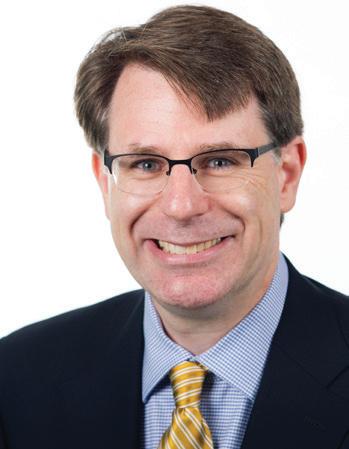


Natalie Stingelin is the new chair of the School of Materials Science and Engineering (MSE), where she holds a joint appointment. She also was elected to the National Academy of Inventors (NAI) Fellows Program, an honor bestowed upon the highest level of academic inventors.


8 SCHOOL OF CHEMICAL AND BIOMOLECULAR ENGINEERING, GEORGIA TECH
Faculty News
Philanthropy in Action: Endowed Positions Awarded
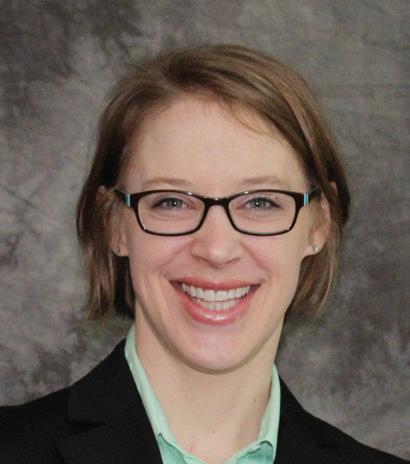
Hang Lu is now holder of the Cecil J. “Pete” Silas Chair.
Silas, a Georgia Tech chemical engineering graduate (ChE 1953) who retired from Phillips Petroleum as president and CEO in 1994, was a longtime supporter, was a longtime supporter of the School of Chemical and Biomolecular Engineering. He is the namesake of ChBE’s Phillips 66 C.J. “Pete” Silas Program in Ethics and Leadership.
Nga Lee “Sally” Ng and Corey Wilson have been awarded Love Family Professorships.


The Love Family has been a long-standing supporter of Georgia Tech. A 1949 mechanical engineering graduate, J. Erskine Love Jr. was president and owner of Printpack. He was chairman of Georgia Tech’s Centennial Campaign.
Ryan Lively and David Flaherty (joining ChBE in June 2023) have been awarded Thomas C. DeLoach Jr. Endowed Term Professorships.


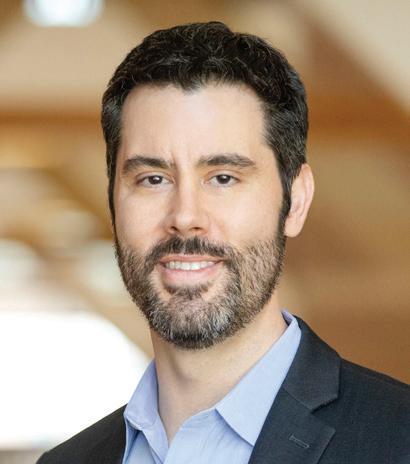
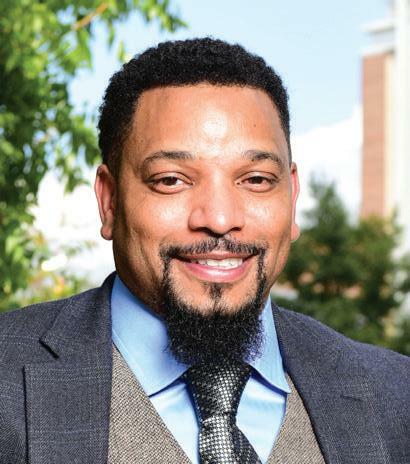
DeLoach, ChE 1969, established his endowment fund in 2007 to support eminent teacher-scholars in ChBE. An independent director of Asbury Automotive Inc., he is a former executive of Mobil Corporation.
Julie Champion and Mark Styczynski have been awarded William R. McLain Endowed Term Professorships.
McLain, ChE 1941, was the founder and CEO of Kusan Inc., a well-known industrial component and toy company. He is past trustee and chairman of the Georgia Tech Advisory Board.
Giving Opportunities
To inquire about making a gift in support of ChBE, contact:
Lauren M. Kennedy (Individuals & Foundations) lauren.kennedy@mse.gatech.edu
Donna Peyton (Corporate Engagement) donna.peyton@chbe.atech.edu
CHBE.GATECH.EDU 9
Alumni Spotlight
Atlanta Mayor Andre Dickens Delivered Annual Silas Lecture
City of Atlanta Mayor Andre Dickens (BS ChBE 1998) addressed the school community on September 21 as the distinguished speaker in the annual Phillips 66 C.J. “Pete” Silas Lecture in Ethics and Leadership.
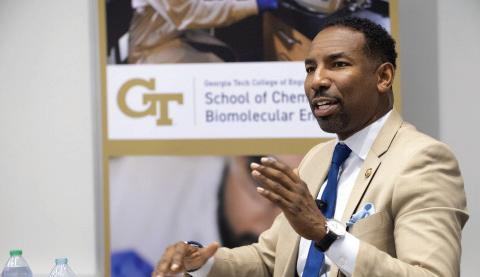
Dickens, who became the 61st mayor of Atlanta in January 2022, recalled meeting Andrew Young, a former city mayor, at age 12 at the grocery store at his mother’s insistence. By age 16, he’d decided he wanted to be mayor also.
“As I started to watch him more and more on TV now that I had met him, I said ‘I want to be him,’” Dickens said. “I want to serve the City of Atlanta.”
One of the first people he told of his dream was another former Atlanta Mayor Shirley Franklin, whose son he played basketball with as a teenager. At the time, she served as chief administrative officer in Young’s administration, and she proved to be an important mentor, helping Dickens with his campaigns for Atlanta City Council. He cited her focus on ethics in reforming Atlanta city government after scandals in a previous administration as an inspiration to him as a leader.
Discovering Georgia Tech
Growing up in Adamsville, a working class neighborhood on the west side of Atlanta, Dickens said he’d never seriously considered going to college until halfway through high school. “I wanted to play baseball….Nobody in my family had gone to college; most of the people in my neighborhood had never gone to college,” Dickens said.
But then a school counselor encouraged him to apply to Georgia
Tech’s Minorities Interested in Technology and Engineering (MITE) program during the summer before his senior year. “I came here for a week, loved it, and did well. They handed me a college application on the last day and said ‘You’re our kind of material,’” said Dickens, who handwrote his application in an hour while waiting for his mother to pick him up. “I didn’t apply to any other colleges.”
“Ethics does not mean that you’re always perfect, but that your intentions and actions are getting closer and closer to being right.” - Andre Dickens
tance of ethics (the lecture’s theme).
At Tech, he was involved with a host of leadership activities in student government, his fraternity, and student organizations. “I was really learning about constituent services and community outreach as a student,” Dickens said, noting that those experiences helped him eventually transition from careers in engineering and sales into public service.
One of his early career experiences was working as a sales engineer for DSM Engineering Plastics, where he became the youngest and first Black salesperson of the year in his second year on the job. “I knew my product and would sell to the strengths, but I was always honest about the challenges,” Dickens said, noting that a 360-degree review of his performance revealed that what his customers appreciated most about him was his honesty.
Later, he co-founded City Living Home Furnishings, which he ran from 2002 to 2011, where his reputation was equally important, he said, highlighting the impor-
Dickens said, “Ethics does not mean that you’re always perfect, but that your intentions and actions are getting closer and closer to being right.”
He said that when running for office, “Imagine I’m on my TV saying, ‘Trust me,’ and all people would have to do is call the Atlanta Journal-Constitution or the radio station and say, ‘Your furniture was trash!’....You are your history to somebody. Who you are in all of these places has really got to be consistent.”
To spotlight the importance of ethics and leadership, Phillips 66 awarded a grant to ChBE in 1995 to develop the Phillips 66/C.J. “Pete” Silas Program in Ethics and Leadership.
Named in recognition of the outstanding professional achievements of Georgia Tech chemical engineering alumnus C.J. “Pete” Silas, who retired from Phillips Petroleum as president and CEO in 1994, the program focuses on technical and business decisions that have ethical ramifications.
10 SCHOOL OF CHEMICAL AND BIOMOLECULAR ENGINEERING, GEORGIA TECH
Shelbe Johnson: 2022 Helen Grenga Outstanding Woman Engineer
For demonstrating outstanding scholarship, leadership, and service at the Georgia Institute of Technology, Shelbe Johnson (BS 2022) won the 2022 Helen Grenga Outstanding Woman Engineer Award from the Women in Engineering (WIE) program.
At the WIE Banquet where Johnson accepted the Grenga Award, Professor and Associate Chair of Undergraduate Studies Victor Breedveld told attendees, “Her ability to facilitate growth in others and seemingly effortlessly guide them towards greater awareness and appreciation of the need to enhance diversity, equity, and inclusion is simply awe-inspiring.”
Graduate Studies
After graduating in August 2022, Johnson began her PhD studies at Massachusetts Institute of Technology after earning admision to all 11 top doctoral programs to which she applied. For her graduate studies, she won a National Science Foundation Graduate Research Fellowship, which includes three years of financial support (annual stipend: $34,000).
Johnson, who plans to become a professor after completing her doctoral studies, said she was inspired to pursue a career in science after a beloved high school English teacher in Columbus, Georgia, succumbed to cancer.
“I knew I was too squeamish to go into medicine, but I knew that I wanted to equip doctors with the tools they need to help people – affordable tools that can help people all over the world,” she said.
Johnson, winner of ChBE’s Outstanding Junior Award in 2021, decided to pursue her undergraduate degree in chemical engineering because of her initial interest in the pharmaceutical industry.

“Shelbe is a stellar student in the classroom, a promising researcher, and she has been a true changemaker on campus.”
- Victor Breedveld
Research Experience
Johnson said she learned how much she enjoyed research during her freshmen year, when she became an undergraduate research assistant in Professor Mark Styczynski’s Lab. She worked with his team to develop a field-friendly homocysteine biosensor to increase healthcare accessibility.
Her presentation on her lab research with biosensors won first place at the College of Engineering’s Undergraduate Research Poster Competition in spring 2021 and a second-place poster prize at the national 2021 AIChE Annual Student Conference.
Johnson has bolstered her research experience with internships at ExxonMobil and Procter & Gamble, and branched into private equity consulting in summer 2021 with an internship at Bain & Company, advising on investment and growth strategies in health care.
“I’d done a one-week program
on building entrepreneurial leaders the year before, which led to the offer from Bain,” she explained. “I wanted to get some business experience, because I knew I’d pursue a PhD and be technically focused for my whole career.”
Campus Leader
On campus, Johnson demonstrated commitment to helping other students succeed as a team leader in the GT 1000 course, a member of the Peer-Led Help Desk, and a mentor in the ChBE Success Program that supports underrepresented minority students. In 2022, she received ChBE’s Outstanding Course Assistant Award, which is determined by student voting.
In fall 2021, she won Georgia Tech’s Diversity Champion honor for her multiple efforts to support diversity, equity, and inclusion on campus and beyond. For example, she helped create the Black Entrepreneurship Summit to highlight student business leaders, and served as a sophomore advisor for the campus chapter of the National Society of Black Engineers and social media chair for the National Organization of Black Chemists and Chemical Engineers chapter.
As a member of the AfricanAmerican Student Union, Johnson served as co-chair for Black History Month, leading the planning of an event that included activist Angela Davis as a speaker and a collaboration with the Georgia Tech Library to feature Black artists in a campus gallery.
She also served on ChBE’s Diversity, Equity, and Inclusion (DEI) Committee, working with faculty, students, and staff to develop initiatives. In addition, Johnson was associate justice on Georgia Tech’s Judiciary Cabinet, hearing cases of non-academic misconduct, as well as president of the Adventist Christian Fellowship on campus.
CHBE.GATECH.EDU 11
Student Spotlight
Seniors Build Business around Phone Battery-saving Technology
An entrepreneurship project in their Electrochemistry elective in spring 2022 brought together chemical and biomolecular engineering major Spencer Hayes and materials science major Samantha Mitra to work on battery technology.
“After much research and buckets of coffee, we came up with TRTSE,” Mitra said.
TRTSE (short for Tortoise) is a power adaptor that optimizes phone charging overnight so that your phone lasts much longer throughout the day, even years after buying it.
Hayes and Mitra continued developing their business concept past the conclusion of the class, winning acceptance into the summer 2022 CREATE-X program, which aims to empower students with the knowledge, skills, and experiences to launch successful startups and pursue future entrepreneurial opportunities during their careers.
Now they have officially launched their company and entered the prototyping phase for their technology, with $30,000 in funding ($25,000 from the Klaus Fusion Fund and $5,000 from CREATE-X).
Business Goals
“Our vision is to expand into all rechargeable battery devices, so that you have to throw away less batteries and the world has to mine less lithium,” Hayes said. “We’re initially focusing on phones, but next we’d like to break into laptops,
“Our vision is to expand into all rechargeable battery devices, so that that you have to throw away less batteries and the world has to mine less lithium.” - Spencer Hayes
because people often like to hold onto those as long as they can.”
For phones, the TRTSE technology involves an app associated with the charger that employs machine learning to track trends of your phone usage to determine the best pacing for your phone charging overnight. So, when your alarm awakens you in the morning, your phone has just reached the optimal charge point instead of exceeding it, which could damage components over time.
“Phones are best at 20 to 80 percent of charge,” Mitra explained. “If you let the phone drain to zero, it puts a lot of strain on the battery. Phone makers and others push fast charging as the most convenient way to charge your phone. Yet, that is worse for your battery in the long run. It’s like your favorite pair of shoes. If you run fast in them all the time, the faster they wear out.”
Entrepreneurial Education
During the CREATEX summer program, Hayes and Mitra attended weekly sessions to learn about business and legal matters essential to starting a company. A variety of business founders and venture capitalists also provided regular coaching.

In the spring 2022 Electrochemistry class where Hayes and Mitra were teamed, Assistant Professor Nian Liu had introduced the entrepreneurship project for the first time. Liu said that as a Jim Pope Faculty Fellow, one of five at Georgia Tech, he has been charged with cultivating entrepreneurship among the student body.
“The student feedback overall was very good,” Liu said. “They were initially not used to this kind of project.”
During his undergraduate studies, Hayes has worked three semesters with Albemarle Corporation through Georgia Tech’s Co-op program. After graduation, he will join Albemarle as a technology and research engineer
Mitra, a member of Professor Liu’s Lab who won a President’s Undergraduate Research Award in 2021, plans to pursue a PhD focusing on battery technology to help push TRTSE further.
Of the two entrepreneurs, Liu said, “I think they are doing very cool things that set an example for Georgia Tech students to use their knowledge and passion to create impact in the real world.”
12 SCHOOL OF CHEMICAL AND BIOMOLECULAR ENGINEERING, GEORGIA TECH
Student Achievements
2022 NSF Fellowships
Eleven students connected to Georgia Tech’s School of Chemical and Biomolecular Engineering won 2022 National Science Foundation (NSF) Graduate Research Fellowships.
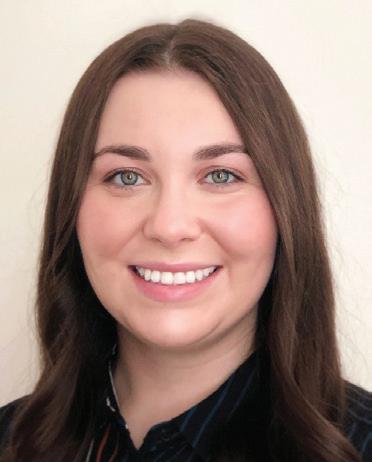
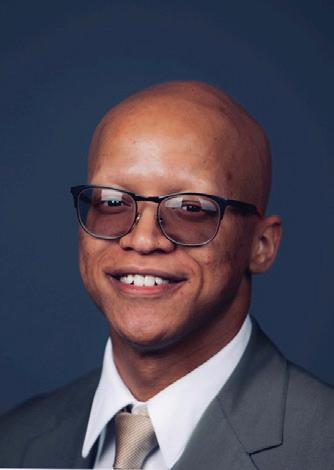
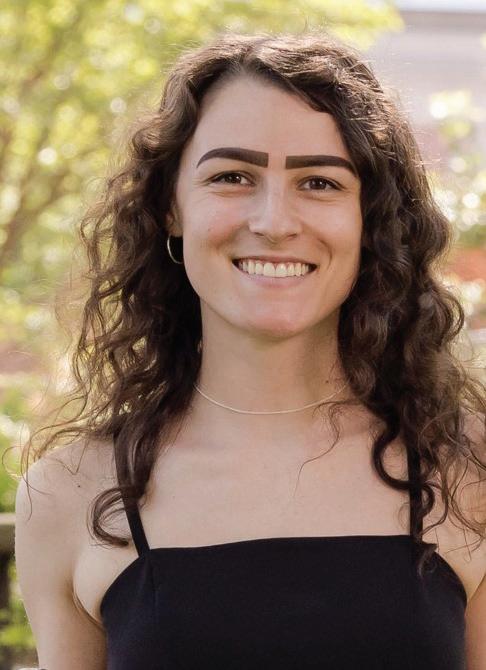
GT-ChBE grad student winners: Alexander Heiler, Anna Kaehr, Calib Lanier, Jamie Salinger, Harry Tuazon (pictured above left to right)
Former and current undergrads: Raghav Acharya (BS 2022), Isabella Bowland (BS 2022), Austin Fan (BS 2022), Shelbe Johnson (Summer 2022), Kristian Lockyear (BS 2021; ME grad student) Jade Marcus (BS 2019)
Qiang Fu won the 2022-2023 U.S. Blue Sky Young Researchers and Innovation Award from the American Forest & Paper Association (AF&PA) for “Recovery and Fractionation of High-Value Organic Acids from Kraft Black Liquor.”

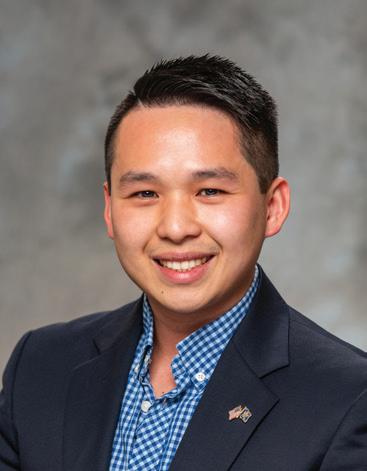
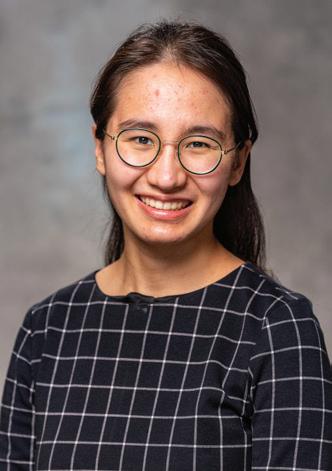

Rahul Venkatesh won ChBE’s 2022 Ziegler Award for Best Paper for “Data Science Guided Experiments Identify Conjugated Polymer Solution Concentration as a Key Parameter in Device Performance.”


Ziegler Award - Best Proposal
George Yuchen Chang won ChBE’s 2022 Award for Best Proposal for “The Kinetics of Ball Mill Mechanochemistry and its Application to the Depolymerization of Plastic Waste.”
Natalie GaNun (BS 2022) won the AIChE Outstanding Senior Award in ChBE.
Blue Sky Award Winner AIChE Outstanding Senior Award
Ziegler Award - Best Paper
Georgia Tech School of Chemical and Biomolecular Engineering 311 Ferst Drive NW Atlanta, GA 30332-0100

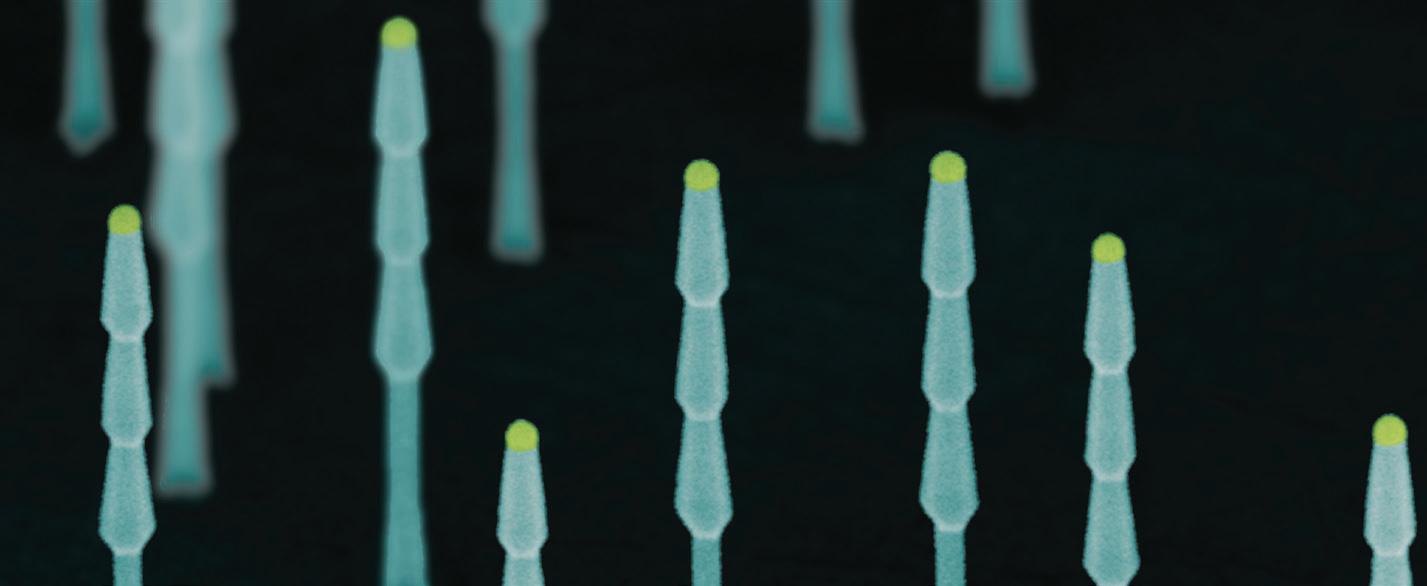
404-894-1328 (phone) 404-894-2866 (fax) chbe.gatech.edu




U.S.
PAID
Permit
Big. Solve Big.
Visit us online at chbe.gatech.edu ©2022 Georgia Institute of Technology, School of Chemical and Biomolecular Engineering Nonprofit Organization
Postage
Georgia Tech Atlanta, GA
No. 3023 Think



























































